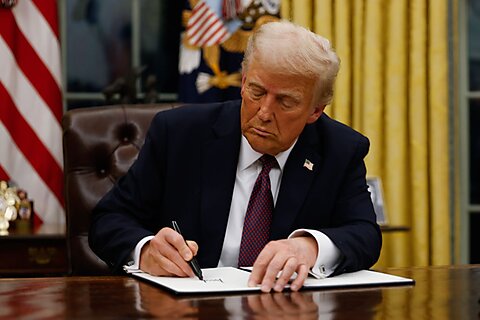Lincoln’s Emancipation Proclamation and suspension of habeas corpus; Roosevelt’s Japanese Internment and confiscation of gold; Truman’s desegregation of the armed forces; Eisenhower’s military support of the Little Rock Nine; and Nixon’s introduction of wage and price controls. All stemmed from a single presidential power: the Executive Order (EO).
Although not explicitly mentioned in the Constitution, the authority to issue EOs emanates from Article II’s grant of executive power to the president or from authority delegated by Congress. EOs carry the force of law without requiring congressional approval, though the Supreme Court has historically struck down orders exceeding the aforementioned sources of authority. Courts have, however, permitted presidential powers to expand via EOs.
Every president except William Henry Harrison has issued an EO, though their frequency and scope have shifted over the nation’s history; they were largely limited to routine administrative uses during the early Republic. FDR became their most prolific user, signing a yearly average of 307. In recent decades, Democrats and Republicans have used EOs at similar rates: W. Bush averaged 35 per year to Obama’s 36; H.W. Bush 42 to Clinton’s 46; Trump signed 220 in his first term, while Biden penned 162.
Despite bipartisan use, EOs have fueled polarization. Presidents use them to cater to their base while circumventing the coalition-building that legislation requires. Some viewed Trump’s proclamations renaming the Gulf of Mexico and mandating neoclassical architecture, or Biden’s dissolution of the 1776 Commission, as more partisan culture war signaling than substantive policy.
In Libertarian Land, EOs would be limited to the enforcement of laws passed by Congress and the direction of the executive branch. In the wake of a natural disaster, a state governor might request federal assistance; in that case, the president could issue an EO directing FEMA to coordinate disaster relief—an action grounded in statutory authority under the Stafford Act. Additionally, structural reforms would clarify and constrain EOs, requiring explicit citation of constitutional or statutory authority and sunsetting emergency powers once crises pass.
Many EOs throughout history would not pass muster in Libertarian Land. Roosevelt’s creation of the Works Progress Administration exemplifies the issue: establishing a massive federal agency and spending program without congressional authorization, usurping legislative power over both government structure and fiscal policy. By contrast, Eisenhower’s EO enforcing the desegregation of Central High School represents legitimate executive authority: implementing a federal court order and ensuring compliance with existing constitutional obligations rather than creating new policy from scratch.
Thus, a libertarian president would hardly ever issue EOs, except to undo the broad range of prior EOs that have excessively expanded government control.
This article appeared on Substack on June 23, 2025. Irati Evworo Diez, a student at Harvard College, co-wrote this post.


